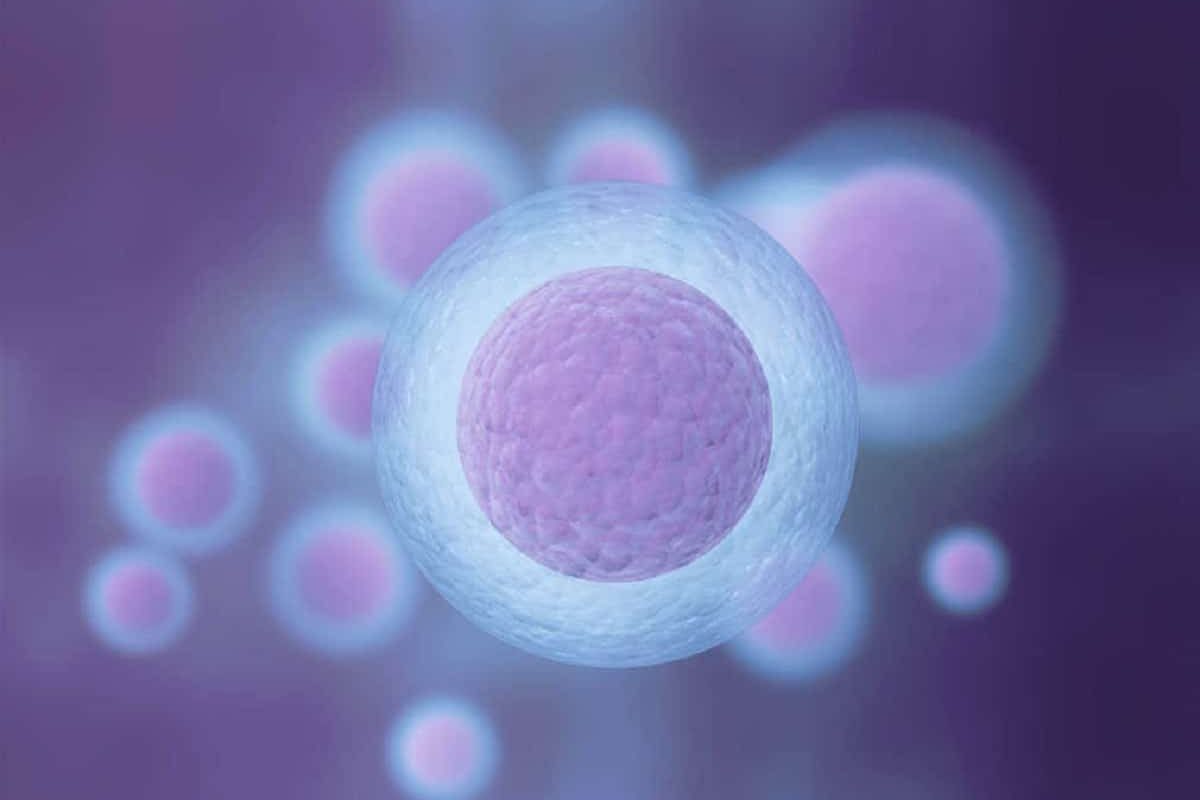The menstrual cycle is divided into 2 phases: the follicular phase and the luteal phase. Day 1 of the cycle coincides with day 1 of menstruation (bleeding), giving way to the follicular phase. Then ovulation takes place followed by the next phase, the luteal phase.
Now that we know the effects of the menstrual cycle, what does the menstrual cycle interruption entail? What happens in menopause?
Menopause is the cessation of menstruation in women and it begins roughly by the age of 50. For several years prior to menopause, anovulatory cycles (cycles without ovulation) are frequent, and the number of functional follicles decreases (premenopause). Thus, in women, estrogen levels gradually decrease until finally ceasing, while the FSH and LH hormones increase, trying to initiate a new menstrual cycle that will never take place.
Estrogen decrease in women leads to the interruption of menstruation, but it is also responsible for the characteristic symptoms of menopause: decreased vaginal secretions, loss of breast tissue, decreased bone mass (osteoporosis), vascular instability (hot flashes), emotional flimsiness, increased risk of cardiovascular events, accumulation of fat in the central area, etc. One of the points to highlight is the increased prevalence of the metabolic syndrome (abdominal obesity, dyslipidemia, increased insulin resistance, diabetes and hypertension), which will make it even more important for women this age to take care of their health through a proper workout program and a change in their nutritional habits.
Ultimately, female sex hormones are not only involved in procreation, but encompass various functions. Everything is related. A personalized diet, followed by a healthy lifestyle will bring multiple benefits, such as a positive feeling about oneself, an adequate body composition and a better progression of the menstrual cycle, which is an indicator of the state of health in women.
I hope this article helps you understand a little more about the complex mechanisms that a woman undergoes each month and that affect both the mood and the appetite for certain foods and fat accumulation in specific areas.
Link: https://www.diariodenavarra.es/noticias/blogs/dn-running-dudas-consejos/2020/06/25/efectos-del-ciclo-menstrual-sobre-composicion-corporal-energia-salud-694100-3363.html
Date: June 26th, 2020
By: María Jáuregui López
Article written by María Jáuregui López (@dietistaeninsta), Pharmacy + Human Nutrition and Dietetics graduate from the University of Navarra, ID number NA396. She is passionate about Nutrition and is an advocate of a healthy lifestyle. Currently, she is part of the Javier Angulo team working as a Dietitian-Nutritionist at the Center “Esportrium Nutrición y Fisioterapia”
Bibliography:
[1] S. Andrea Contreras and O. Larisa Fabres, “Epilepsia y mujer,” Rev. Médica Clínica Las Condes, vol. 24, no. 6, pp. 928–937, 2013, doi: 10.1016/s0716-8640(13)70246-3.
[2] L. B. De Souza, K. A. Martins, M. M. Cordeiro, Y. D. S. Rodrigues, B. P. M. Rafacho, and R. A. Bomfim, “Do Food Intake and Food Cravings Change during the Menstrual Cycle of Young Women?,” Rev. Bras. Ginecol. e Obstet., vol. 40, no. 11, pp. 686–692, 2018, doi: 10.1055/s-0038-1675831.
[3] Xusa Sanz, “Curso ciclo menstrual y salud.” Norte Salud Nutrición. Escuela de alimentación.
[4] A. C. Hackney, A. L. Kallman, and E. A?gön, “Female sex hormones and the recovery from exercise: Menstrual cycle phase affects responses,” Biomed. Hum. Kinet., vol. 11, no. 1, pp. 87–89, 2019, doi: 10.2478/bhk-2019-0011.
[5] “Bot PLUS [Base de Datos],” [Online]. Available: https://botplusweb.portalfarma.com/.
[6] Linda S. Costanzo, FISIOLOGÍA, 4a edición. ELVESIER.
[7] “OFFICE ON WOMEN’S HEALTH,” [Online]. Available: https://espanol.womenshealth.gov/menstrual-cycle.
[8] Y. Zhengwei and J. C. Schank, “Women do not synchronize their menstrual cycles,” Hum. Nat., vol. 17, no. 4, pp. 433–447, 2006.
[9] A. Lanfranchi, “A Scientific Basis for Humanae Vitae and Natural Law: The Role of Human Pheromones on Human Sexual Behavior Preferences by Oral Contraceptives and the Abortifacient Effects of Oral Contraceptives,” Linacre Q., vol. 85, no. 2, pp. 148–154, 2018.
[10] C. J. Wysocki and G. Preti, “Facts, fallacies, fears, and frustrations with human pheromones,” Anat. Rec. – Part A Discov. Mol. Cell. Evol. Biol., vol. 281, no. 1, pp. 1201–1211, 2004.
Nutrigenomics Institute is not responsible for the comments and opinions included in this article






